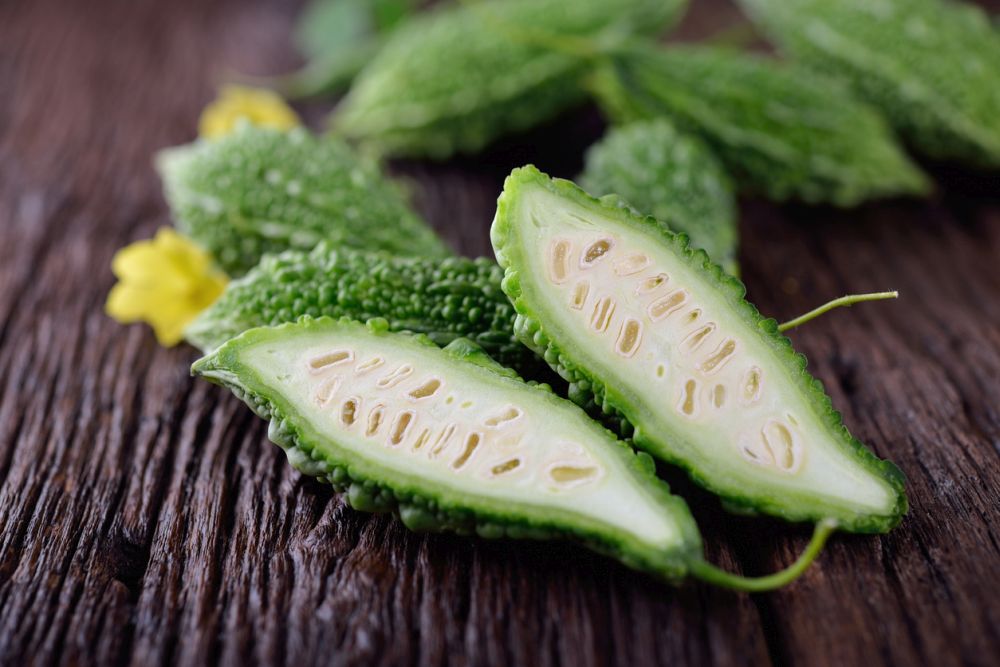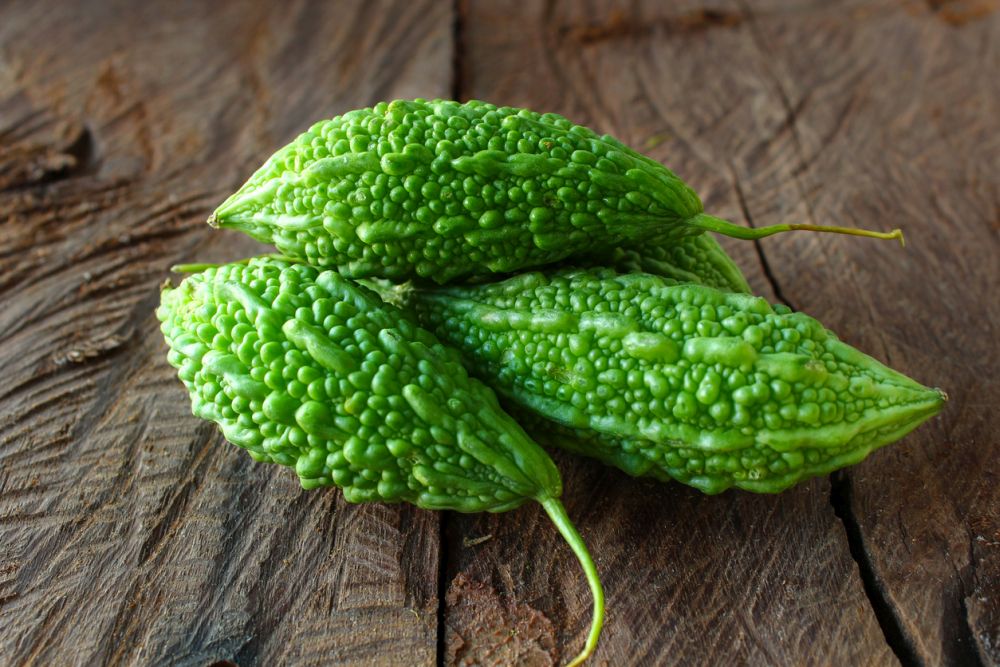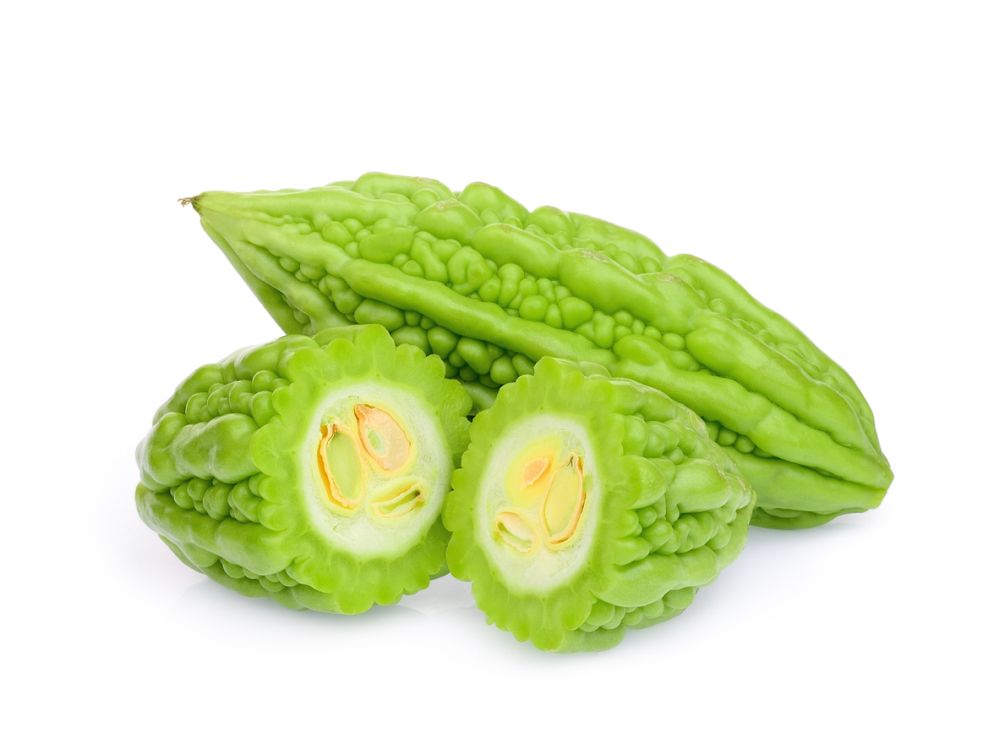Bitter Melon Care: How To Grow And Harvest Bitter Melon Plants
If you’re a fan of herbal tea, you must have heard about bitter melon tea. Made from dried slices of bitter melon, the medicinal tea is popular in many parts of the world. As for bitter melon or bitter gourd, as some people like to call it, it too has its own medicinal properties. From the Caribbean to Africa and China, the wrinkly fruits of this vine have been used to treat everything from diabetes and digestive problems to cough, gout, and skin diseases.
But as a veggie, gardeners grow bitter melon for food. The young leaves and shoots have a delicate taste in your salad. And the ripe fruits can be cooked to make delicious and nutritious soups and stews. And since you can grow it in your garden, you will have access to the fresh young shoots and fruits to expand your culinary delights.
Read more to find out how to grow bitter gourd, which variety to grow, and how to care for and harvest the plant.
All About Bitter Melon
Although a native of Africa, bitter melon (Momordica charantia) quickly spread to Asia and the Caribbean, where it was valued as a dry-season food. The fruits, bitter as they are, have a good shelf life making them ideal for travelers, sailors, and merchants. This might explain the different names this plant goes by. It’s known as bitter gourd, bitter apple, balsam pear, and bitter squash, among other names.
The mature vine grows to about 6 feet tall. Since the supple vines cannot support the weight of the leaves and fruits, you’ll need to set up a trellis or support near the vine in your garden. As for its ornamental values, the leaves of the plant have a lot to contribute to your garden’s landscape. The lobed leaves are about 4 inches long, with some varieties only reaching less than a couple of inches. As for flowering, it starts in the early summer in June or July. The flowers are small and yellow. Usually, male flowers bloom first, followed a week later by female blooms.
After pollination, the fruits develop out of the center of the female flowers. This usually happens sometime in late October or early November. The oblong fruits are hollow inside with crunchy flesh. The cavity in the middle of the fruit is usually filled with flat seeds. You can eat the unripe green fruits raw or wait for them to turn yellow when they ripen. The tender shoots and leaves are very much edible, either raw or cooked.
Bitter Melon Varieties
The various names of the bitter melon give you an idea of the many varieties available to grow in the garden. For the most part, you can grow just about any of those varieties as long as you can get your hands on their seeds. Here are some of the more popular bitter melon varieties.
- Taiwan Large: The fruits of this cultivar reach about 12 inches long and have green skin and white flesh. The plant has high resistance to disease, humidity, and rainfall. The crunchy fruit weighs about one pound on average. More cultivars were grown in Thailand that have richer flavors out of this one.
- Japan Long: Another large fruit that reaches one foot when it’s ripe. This cultivar produces fruits with dark green skin and needs to be harvested before it reaches its full length. This cultivar is more suited to subtropical zones and has a high tolerance to drought and sudden changes in temperature.
- Taiwan White: This cultivar produces fruits that look like radishes. Both the skin and the flesh are white. The flesh is less crisp than other cultivars and is used in East Asian cuisine in stir fry dishes along with salads. It has fast growth rates, and you can start harvesting the crops after 55 days from the time you plant them in your garden.
- Japan Green Spindle: This cultivar doesn’t produce fruits as large as the others on this list, but the fruits are no less tasty. You need to harvest them when they’re young and tender since the ripe fruits are too bitter to eat. One side of the fruit is round and thick, while the other end is thin and pointy, giving the fruit the shape of a spindle.
How to Grow Bitter Melon
Whatever bitter melon variety you choose, make sure it suits your zone. The seeds are readily available online, or you can buy a young vine at your local nursery. Here we’ll cover starting the bitter gourd from seeds.
- Once the last frost is over, and the air temperature is around 75 degrees and rising, you’re ready to start your bitter melon vines.
- Get the seeds from a reputable source online and drop them in a jar full of water before planting. Remove the seeds that float and get rid of them. Soak the seeds 24 hours before planting them.
- Choose an area in your garden that gets full sun for at least 6 hours a day. Some varieties are tolerant to partial shade.
- Break the top 6 inches of the soil with a hoe and work in about 2 inches of organic compost or aged manure. Rake the soil to spread the organic materials evenly.
- Install a trellis shaped like a letter A next to the spot you plan to sow the seeds. It should be about 6 feet high to accommodate the mature vines.
- Fish the seeds out of the water and spread them on a paper towel to dry.
- Dig a small hole about a half-inch deep and drop in two to three seeds in one hole. Cover them with soil without packing it.
- Space the holes about 5 feet apart if you’re planting more than one vine. Each vine should have its own trellis.
- Water the soil to get it moist but not overly wet. And keep watering it every morning since the seeds need moist soil to germinate.
- After 3 days, you’ll notice the first sprouts of the seeds.
- When the seedlings have about 4 leaves growing, you can thin them out. Keep only one seedling growing in each hole.
Bitter Melon Care
Although starting bitter melon cultivars from seeds seems easy and straightforward enough, the hard work is reserved for caring for the plant. This is a vine that needs plenty of water and a lot of attention to protect it against pests and diseases.
Soil
Bitter melon loves loose and well-drained soil. The more sandy the soil, the better. So check the texture and tilth of the soil and test its structure. If the soil is too heavy with high water retention, you’ll need to amend it before you can plant the seeds of bitter gourd. The easiest way to fix heavy soil is to add coarse sand and work it in the top 10 inches of the soil. Keep adding sand until the soil becomes loose in your hand and doesn’t turn into a clump. Once that’s done, take a sample of the soil and test its pH level. It should be between 5.5 to 6.6, which is either neutral or slightly acidic.
Water
Although bitter melon craves a lot of water, it needs that water in moderate amounts every time. The soil should be evenly moist at all times throughout the 10 to 16 weeks of the vine’s life. To solve this riddle, you’ll need to water the gourd every morning without fail. Fill a watering can and get the top three inches of soil around the base of the vine moist. Don’t over-water it since the roots will rot easily. If you fail to water the gourd in the summer, the fruits will be more bitter than average, and you won’t get a good crop out of the vine. Also, avoid sprinkling the leaves or vines with water since that leads to fungal infestations.
Fertilizer
The vine of the bitter melon thrives in rich soil packed with organic materials. You’ll need to add plenty of compost or manure to the soil before sowing the seeds of the gourd. And once the vine is growing on the trellis, you’ll need to supplement the soil with a custom fertilizer. Use a fertilizer low in nitrogen and high in phosphorus and potassium. Nitrogen leads to an overgrowth of the foliage at the cost of flowering and fruits. Apply a 5-10-10 fertilizer once every 4 weeks if you suspect the soil is running low on nutrients. Use a side dressing of well-rotted manure before flowering time in July and again in October before the fruits develop.
Pollination
Although each bitter melon vine grows both male and female flowers, pollination can be a little tricky. The first flowers start to bloom around 6 weeks after planting the seeds. These are usually male flowers with a long and curly stem growing out of their center. A week later, female flowers open up with a cup-like shape at the center. Bees and butterflies need to visit the male flowers then the female flowers to pollinate the latter ones. But sometimes, these pollinators don’t do a good job.
In that case, you’ll need to pollinate the flowers manually. Pick a male flower and enter the central stem inside the swollen ovary of the female flower. Keep doing that methodically until you have pollinated all the females.
Pests and Diseases
For the most part, you’ll need to watch out for fruit flies and spotted and striped cucumber beetles. Fruit flies wait for the bitter melon fruits to develop, then they attack them spreading diseases like fruit rot. As for the cucumber beetles, they bore holes in the vines to reach the sap and, in the process, infect the vines with bacteria that cause them to wilt. You’ll need to use organic pesticides against cucumber beetles and to cover the fruits to prevent fruit flies from gaining access to them.
As for diseases, downy mildew, rot, rust, and powdery mildew are the most common ones. Remove infected vines and leaves and disposes of them safely to avoid spreading the disease to the rest of the vine.
Harvesting Bitter Melon
After surviving the onslaught of diseases and pests, not to mention having to hand pollinate the shy flowers, the fruits are finally big enough to harvest. Usually, harvesting takes place after 12 to 16 weeks from the time you plant the seeds. But since some varieties need to be harvested when still young and tender while others can be harvested when ripe, that time frame varies wildly depending on the cultivar you grow.
You can pick the fruits every couple of days. As for the leaves and tender shoots, you can pick them from the time the vine starts to climb on the trellis. Avoid gathering older leaves or stringy shoots since they’re too hard and bitter to eat.
To store the bitter gourd fruits, wash them in lukewarm water, then keep them in the fridge. They have a long storage life and won’t lose any of their crispness or succulence even after weeks in the fridge.


